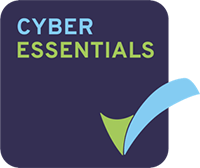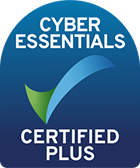Introduction
Mobile phones have become an integral part of our lives, and advancements in technology have made them more than just communication devices. Mobile health technology is now available to help us monitor and manage our health in real-time. With the help of external devices and mobile apps and technology like Photoplethysmography(PPG) and remote Photoplethysmography (rPPg) , we can now measure remote vital signs and track them over time, providing valuable information to healthcare providers and enabling us to make informed decisions about our health. In this article, we will discuss how to measure health vital signs from a mobile phone and the factors to consider when choosing a mobile health app.
What are Vital Signs?
Vital signs are measurements of basic bodily functions that are essential for life. The four primary vital signs are:
- Body temperature
- Heart rate
- Blood pressure
- Oxygen saturation
These measurements can provide important information about a person’s overall health and can help healthcare providers make diagnoses and treatment decisions.
The Benefits of Mobile Health Technology
Mobile health technology has several benefits for patients, including:
- The ability to monitor vital signs in real-time
- Increased access to healthcare
- Improved patient outcomes
- Reduced healthcare costs
- By providing patients with real-time health data, mobile health technology empowers them to take an active role in their care and make informed decisions about their health.
Choosing a Mobile Health App
When choosing a mobile health app, it’s important to consider several factors, including:
- User interface
- Features
- Data security
- Reviews and recommendations
- Consultation with healthcare professionals
- Users should compare different options and choose an app that best suits their needs and preferences.
How to Measure Health Vital Signs from a Mobile Phone
Blood Pressure Monitoring from a Mobile Phone
Blood pressure monitoring from a mobile phone typically requires the use of an external device that connects to the phone. The device measures blood pressure using a cuff that is placed around the upper arm or wrist. The data is then transmitted to the mobile phone app, where it can be tracked and analyzed. An alternative offered by Vastmindz is remote blood pressure monitoring using your mobile phone and rPPG technology, allowing a more convenient way to track your blood pressure from your phone.
Heart Rate Monitoring from a Mobile Phone
Heart rate monitoring from a mobile phone can be done using the phone’s camera and flashlight. The camera detects changes in the color of the user’s fingertip as blood flows through it, while the flashlight illuminates the fingertip. The data is then processed by the mobile phone app, which provides an estimate of the user’s heart rate. Whilst this method has been in use for many years, an alternative method using natural light and the front facing camera allows a user to capture remote heart rate measurements simply by looking at the camera of the phone for a few seconds.
Oxygen Saturation Monitoring from a Mobile Phone
Oxygen saturation monitoring from a mobile phone requires the use of an external device that connects to the phone. The device uses a sensor that is placed on the user’s fingertip to measure the amount of oxygen in the blood. The data is then transmitted to the mobile phone app, where it can be tracked and analyzed. An alternative offered by Vastmindz is remote Oxygen Saturation monitoring capability using your mobile phone and rPPG technology, without the use of any traditional oximeter device. This offers a more convenient way to track your Oxygen Saturation (SpO2) from your phone.
Temperature Monitoring from a Mobile Phone
Temperature monitoring from a mobile phone can be done using an external device that connects to the phone. The device measures temperature using a sensor that is placed on the skin or in the ear. The data is then transmitted to the mobile phone app, where it can be tracked and analyzed. Th
Accuracy and Reliability of Mobile Health Measurements
Factors Affecting the Accuracy of Mobile Health Measurements
Several factors can affect the accuracy of mobile health measurements, including the quality of the device and sensor, user error, and environmental factors such as temperature and humidity and light conditions. It’s important to follow instructions carefully and use devices correctly to ensure accurate readings.
Comparison of Mobile Health Measurements to Traditional Medical Devices
Mobile health measurements have been shown to be generally accurate and reliable when compared to traditional medical devices. However, it’s important to note that mobile health measurements are not a substitute for medical advice or professional medical care.
Privacy and Security
Privacy Concerns
As with any health-related data, privacy is a concern when using mobile health apps. Users should ensure that the app they choose has strong data security measures in place, such as encryption and password protection. It’s also important to read the app’s privacy policy carefully and understand how the data is being used and shared.
Data Security
Mobile health apps should have strong data security measures in place to protect users’ personal information. This includes encryption, secure data storage, and password protection. Users should also be cautious about sharing their health data with third-party apps or services.
Frequently Asked Questions
Q: Can I trust the accuracy of mobile health measurements?
A: Mobile health measurements have been shown to be generally accurate and reliable when compared to traditional medical devices. However, it’s important to follow instructions carefully and use devices correctly to ensure accurate readings.
Q: What should I consider when choosing a mobile health app?
A: Factors to consider when choosing a mobile health app include user interface, features, data security, reviews and recommendations, and consultation with healthcare professionals.
Q: Are mobile health apps safe?
A: Mobile health apps can be safe if they have strong data security measures in place. Users should ensure that the app they choose has encryption and password protection, and should read the app’s privacy policy carefully.
Q: Can mobile health apps replace traditional medical care?
A: Mobile health measurements are not a substitute for medical advice or professional medical care. Users should consult with healthcare professionals if they have concerns about their health.
Conclusion:
Mobile health technology has revolutionized the way we monitor and manage our health. With the help of external devices and mobile apps, we can now measure our vital signs and track them over time, providing valuable information to healthcare providers and enabling us to make informed decisions about our health. When choosing a mobile health app, it’s important to consider several factors, including user interface, features, data security, and consultation with healthcare professionals. By following best practices and using reliable devices and apps, mobile health technology can help us stay informed and take control of our health. Vastmindz helps providers in healthcare, insurance and telemedicine to enable their platforms with remote patient vital signs capabilities. To learn more, get in touch.

Author:
Nikhil Sehgal
Improving health & wellbeing with AI | Founder/CEO @ Vastmindz | Forbes 30 Under 30


